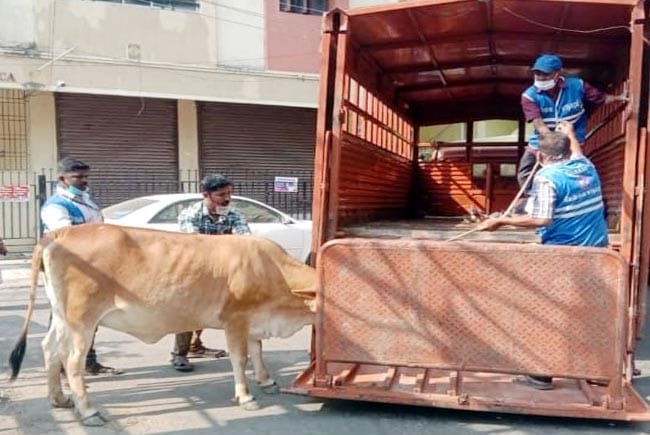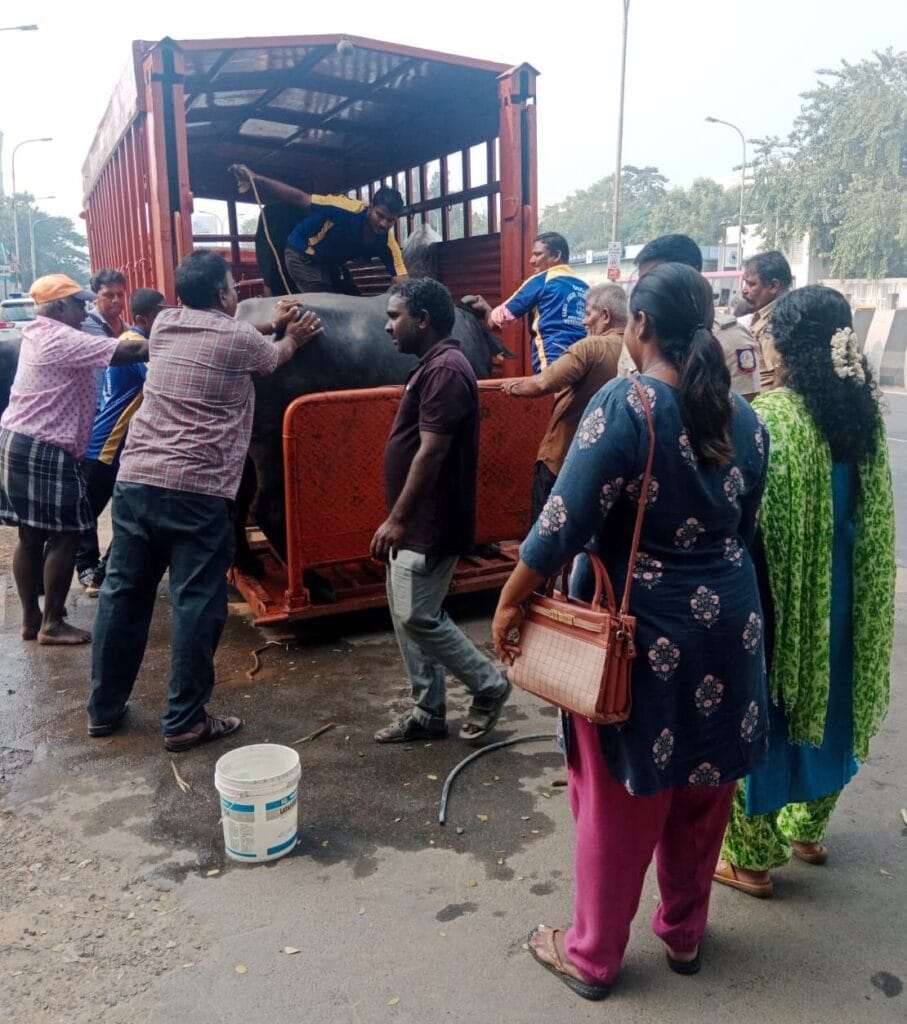In the past three months, the city has witnessed several instances of cattle attacks, some of them grave. Last month alone, at least three such incidents were reported from different localities in Chennai — one of them involved an elderly, speech and hearing impaired person, who was hit by a cow in Triplicane and suffered injuries (he later died in a city hospital of complications from other health issues). The urban challenges posed by stray cattle in public spaces have stumped both the Greater Chennai Corporation (GCC) and citizens, while cattle owners, concerned about their livelihood, shy away from taking responsibility.
While the GCC has taken strict measures to penalise cattle owners for allowing their cattle to roam untethered on the streets, the problem still continues. The Corporation had earlier initiated plans for establishing cattle yards to curb this problem. Now, it is also looking at collaborating with religious institutions and existing ‘gaushalas’ (cow shelters) in the city to house stray cattle. As a long-term measure, the civic authorities want to convince cattle owners to gradually move their operations to the outskirts, but that is easier said than done.
What measures have been taken
Stray cattle often include cows and bulls that have been abandoned by their owners because they are deemed useless or have become old. To capture unclaimed cattle, the GCC has allocated vehicles and necessary equipment. The Corporation has collected fines amounting to ₹86.97 lakh from cattle owners this year, with revised penalties of ₹5,000 for the first impounding and ₹10,000 for subsequent incidents.
GCC Commissioner Dr J Radhakrishnan emphasised the need for a strategic and nuanced response. “We plan to collaborate with temple goshalas to help accommodate the cattle along with using existing facilities and alternative solutions. Identification of cattle for this purpose is underway. Our aim is to protect public spaces and also understand the livelihood difficulties as stated by cattle owners,” he said. The commissioner highlighted the practice of cattle owners tying up animals during inspections, only to release them later and urged the public to cooperate with officials rather than encourage illegal behaviour.
The city faces the task of persuading cattle owners to gradually move their operations to the outskirts, where dedicated milk societies operate. This transition requires a delicate balance between enforcing regulations and ensuring the livelihoods of cattle owners.

Read More: Will stray cattle continue to hold up traffic in ‘Smart’ Chennai?
A multitude of challenges
Preethi, a resident of Choolaimedu, recounted an encounter with a roaming cattle that resulted in a minor injury as she rode her scooter. “I feel conflicted and confused about it. Even as someone familiar with the city, I didn’t anticipate it. I couldn’t balance my scooter when the bull crossed the road. It’s scary, especially considering the existing traffic challenges. If we reflect on it, isn’t this also an environmental concern? With sufficient fields, particularly healthy ones, this might not have become a significant issue,” she adds.
Similarly, Ragini, experienced a similar incident on her way back home from work. “There needs to be some action taken; I can’t suggest what exactly, but it is unsettling when something unexpected, especially cattle, induce panic on the road.”
The GCC has raised the fine imposed on erring cattle owners ₹2,000 to ₹5,000 per head. This happened in the wake of a surge in incidents involving stray cattle attacks, notably the recent case of a nine-year-old girl in Arumbakkam. Additionally, media reports have highlighted similar incidents in Triplicane, where six individuals fell victim to cattle attacks. While accidents involving stray cattle have been reported from Pulianthope, Kolathur, Koyambedu, Triplicane, Kilpauk, Adyar, T Nagar and St Thomas Mount, the GCC’s proposed cattle yards aim to address the challenge.
Meanwhile, dairy farmer Prabhu from T Nagar shed light on the challenges faced by cattle owners. “We are dairy farmers and should be allowed to do our job too. Maybe fix the system for us that denies our livelihood,” Raghu, a dairy farmer for 12 years, emphasised that they aren’t intentionally causing harm and stressed the need for practical solutions.
Selvan from Koyambedu raised concerns about the practicality of small grazing areas, stating, “Why is it hard to allot grazing plots for us in every zone, rather than small areas? Often it is not in our control. Cattle also need to roam around; we are facing a loss of productivity as all we own is our cattle.”
However, the situation is complicated, as once the authorities impound the cattle, owners later give an undertaking, retrieve their animals, and the same offence is repeated. “What do we do, we have to get back our cattle and carry on with our daily life. It is our livelihood, we sell milk and we need grazing yards for our cattle, not cages or false promises,” Raghu adds.

Read More : Stray cattle in Chennai streets: The solution must go beyond fines
Key considerations
The implementation of cattle yards navigates a complex legal landscape, with the Tamil Nadu Urban Act of 1997 attempting to regulate cattle rearing. While collaborating with religious institutions and ‘gaushalas’ is one solution, there is a need to explore other alternatives and emphasise legal clarity on licensing.
In short, key considerations include seeking legal advice, managing the impact on public spaces, exploring collaborations, persuading relocation, implementing measures for repeat offenders, and addressing the current challenge of recurring offences. Any measure taken should consider the well-being of the stray cattle, nuisance caused to the public and their safety, and the livelihoods of the cattle-owning community.